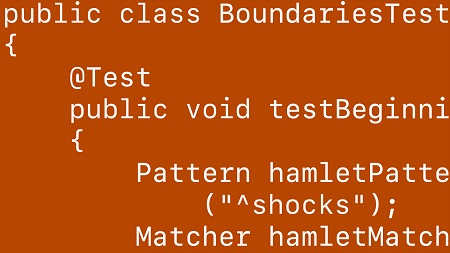
English | MP4 | AVC 1280×720 | AAC 48KHz 2ch | 2h 43m | 450 MB
Learn how to use Java for two components of data science—data engineering and data analysis. Instead of poring over every facet of Java, instructor Charles Kelly focuses on a selection of valuable topics that will help you learn how to leverage Java in your data science career. This course revolves around the ingest, model, query, analyze, and visualize (IMQAV) model, which is a framework for data science workflows. Charles goes over test-driven development and object-oriented design. Using the free community edition of IntelliJ from JetBrains, he presents Java examples including Java classes, methods, operations, and libraries. Plus, Charles shares how to apply the skills that you learned in the course to create magic squares and sudoku puzzles.
Topics include:
- The IMQAV model
- Downloading software
- Installing and setting up a Java coding environment
- Mock tests
- Code coverage
- Using windows, views, and modes in IntelliJ IDEA
- Creating classes and attributes
- Creating constructors
- Casting variables
- Matching literals with regular expressions
- Libraries
- Regular expressions
- Design patterns
Table of Contents
1 Welcome
2 What you should know
3 Using the exercise files
4 Java, data science, and IMQAV
5 JVM languages
6 Downloading software
7 Installing software
8 Introduction to testing
9 Types of tests
10 Mock tests
11 Code coverage
12 Windows, views, and modes
13 Projects
14 Editor basics
15 Refactoring
16 Code execution
17 Debugging
18 Object-oriented principles
19 Primitives
20 Strings
21 Classes and attributes
22 Classes and methods
23 Classes and constructors
24 Exception handling
25 Enumerations
26 Casting
27 Generics
28 Annotations
29 Program flow control
30 Install and use libraries
31 gson
32 StringUtils
33 Introduction to regular expressions
34 Literals
35 Metacharacters and representations
36 Predefined character classes
37 Regex quantifiers
38 Regex boundaries and anchors
39 Regex examples
40 Introduction to reflection
41 Introspect fields
42 Introspect methods
43 Introspect constructors
44 Introspect annotations
45 Introduction to design patterns
46 Singleton patterns
47 Decorator patterns
48 Visitor patterns
49 Introduction to magic squares
50 Magic squares algorithm
51 Adjacency matrix
52 Magic characteristics
53 Building magic cubes
54 Next steps
Resolve the captcha to access the links!